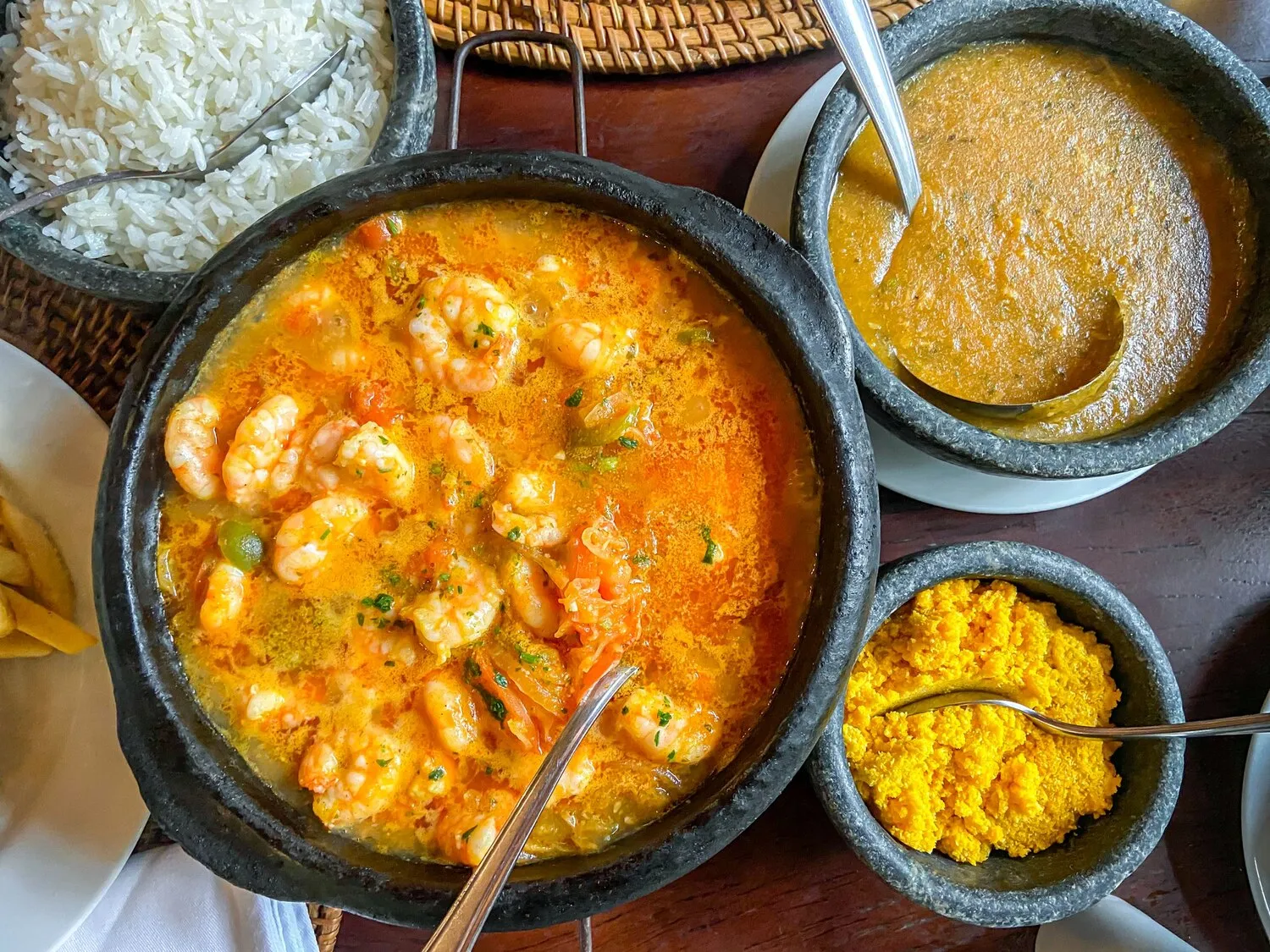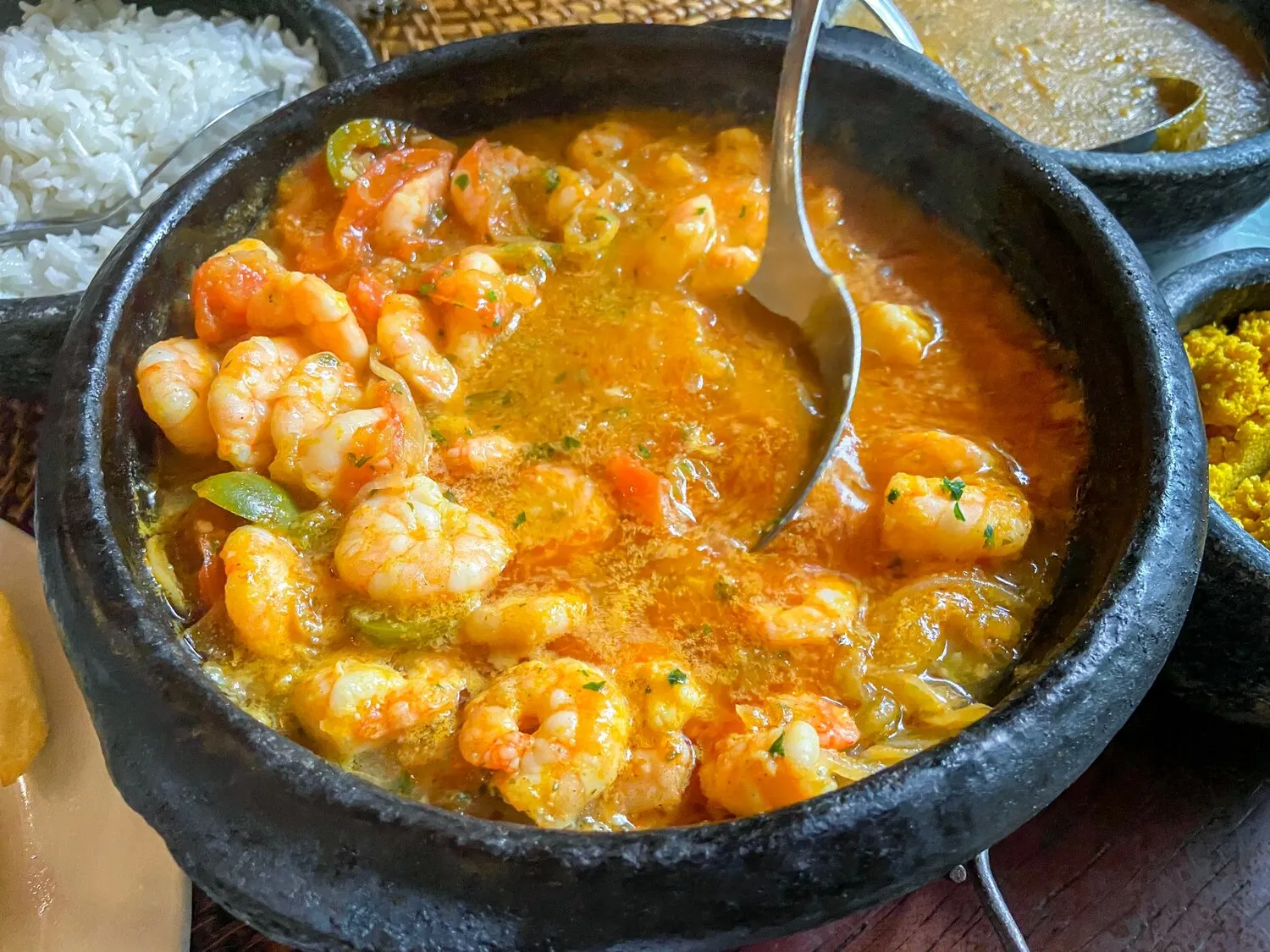
Moqueca Capixaba
Traditional Brazilian seafood stew with fish, tomatoes, onions, cilantro, and urucum (annatto)
Nutrition Facts
* The % Daily Value (DV) tells you how much a nutrient in a serving of food contributes to a daily diet. 2,000 calories a day is used for general nutrition advice.
Mata Hari Buzios Restaurante
Moqueca Capixaba is a traditional seafood stew originating from the state of Espírito Santo, Brazil. Its roots trace back to indigenous cooking techniques, incorporating fresh seafood with readily available local ingredients. The dish has been influenced by both indigenous and African culinary traditions, resulting in a unique and flavorful stew.
Moqueca Capixaba is deeply ingrained in the culture of Espírito Santo, representing a symbol of regional identity and culinary pride. It is often served as a centerpiece at family gatherings, celebrations, and local festivals, showcasing the state's rich coastal heritage.
Family Celebrations
Moqueca Capixaba is a staple at family gatherings in Espírito Santo, often prepared in large pots and shared amongst family members and friends. The communal preparation and consumption of the dish strengthens bonds and reinforces cultural identity.
Regional Identity
Moqueca Capixaba is considered a symbol of Espírito Santo and its distinct culinary traditions. It is a point of pride for the local population and is often showcased in culinary events and festivals to promote the region's gastronomic heritage.
Culinary Tourism
The dish is a significant draw for culinary tourists visiting Espírito Santo, attracting food enthusiasts eager to experience authentic Brazilian cuisine. Restaurants specializing in Moqueca Capixaba are popular destinations, contributing to the local economy.
Moqueca Capixaba offers a harmonious blend of fresh seafood flavors, bright acidity from tomatoes, aromatic onions and cilantro, and a subtle earthy sweetness from urucum (annatto). The dish is characterized by its delicate and subtly sweet flavor profile compared to its Bahian counterpart.
The primary flavor comes from the fresh fish or seafood used, typically white fish like grouper or sea bass, but shrimp, crab, and other seafood can also be added. Tomatoes provide acidity and sweetness, onions contribute aromatic depth, and cilantro offers a fresh, herbaceous note. Urucum (annatto) imparts a mild, earthy flavor and a vibrant reddish-orange color. Olive oil is used extensively, contributing to the rich texture and flavor.
Freshness is Key
Use the freshest fish and seafood available. The quality of the ingredients directly impacts the flavor of the stew. Look for fish with firm flesh and a fresh, clean smell.
Layer the Flavors
Build the flavors gradually by layering the ingredients in the pot. Start with onions and garlic, followed by tomatoes, bell peppers (optional), and finally, the fish and seafood. This allows the flavors to meld together harmoniously.
Gentle Cooking
Cook the Moqueca Capixaba over low to medium heat. Avoid boiling the stew, as this can make the fish tough and dry. The goal is to gently simmer the ingredients until the fish is cooked through and the flavors have combined.
Don't Overcook
Be careful not to overcook the fish. It should be cooked until it's opaque and flakes easily with a fork. Overcooked fish will be dry and rubbery.
Olive Oil Quality
Use a high-quality extra virgin olive oil. This will add richness and flavor to the dish. Don't skimp on the olive oil, as it's a key component of the Moqueca Capixaba.
Explore additional Seafood Stew dishes and restaurants
Explore Seafood StewDiscover top dining spots and culinary experiences in Armação dos Búzios.
Explore Armação dos BúziosLearn more about the food culture, restaurant scene, and culinary heritage of Brazil.
Explore Brazil
